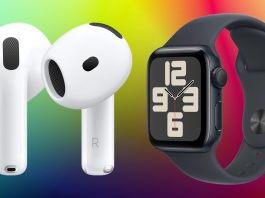Apple has revealed a new smartphone technology that could let you control future iPhones flawlessly in conditions where most current smartphones would fail, such as in the rain or even underwater.
In a recently-granted patent, Apple describes new technologies that will allow a portable device, such as an iPhone, to cope with what it calls “moisture events” by automatically adapting its on-screen display, control buttons and sensors to suit environmental conditions.
Apple’s new iPhone technology could let you use your phone more easily underwater or in the rain.
A moisture event could be defined as anything ranging from a small amount of liquid detected on the outside of the smartphone, to the device being completely immersed in a liquid as would be the case for underwater use.
Using pressure and moisture sensors, the technology would detect and eliminate any “false touches” that may be triggered by liquid touching the screen, and then modify the on-screen control layout accordingly. This could involve moving control buttons further apart, changing their size and function or removing them entirely.
In addition to changing the layout of the buttons, the phone would switch from using its typical usual capacitive touch-sensitive mode, that only works well in the dry, to using pressure sensors to detect the force and position of on-screen button presses, similar to Apple’s Force Touch and 3D Touch technologies last used in the iPhone XS range. For a touch to be registered, it would have to apply pressure greater than a predetermined threshold which could be adjusted according to the type of moisture event currently detected.
Apple’s proposed Underwater Mode automatically reconfigures the user interface, controls and camera … [+]
For example, Apple’s patent document shows a smartphone camera app operating in discrete “dry”, “wet” and “underwater” modes that present different versions of the interface tailored to each use case.
In wet mode, certain camera features are automatically removed from the interface, so they can’t be activated, whereas in underwater mode, the usual set of camera controls is removed entirely and replaced with a pair of extra-large buttons. These are much easier to activate underwater but are restricted to simple photo or video capture, without any access to camera settings. In this case, the camera would instead be automatically configured with the best underwater photography settings. The smartphone’s on-screen display also adapts to show the camera’s current depth underwater, which will help you stay within the device’s water resistance limits.
While underwater photography isn’t a typical use case for most iPhone users, having a smartphone that can adapt to and overcome challenging weather conditions would put Apple at a distinct advantage over the competition, especially in locations where moisture events are an everyday occurrence. On the other hand, interfaces that change without warning and move buttons around can be very confusing to some users, so great care will have to be taken with the design.
You can read full details here in Apple’s patent filing.
Follow @paul_monckton on Instagram



